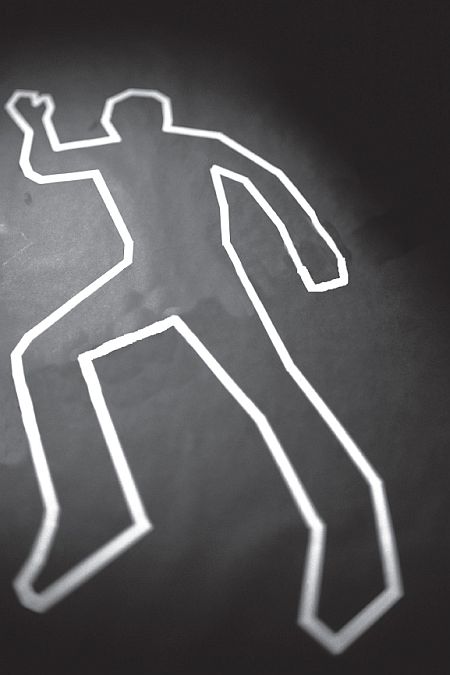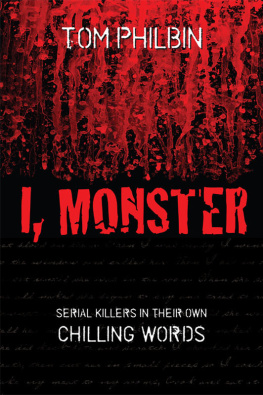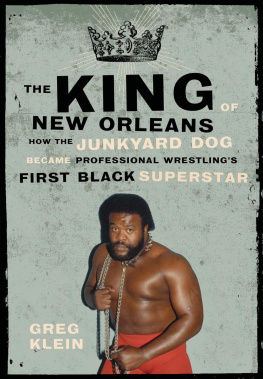

Notable Quotable
The body speaks to you.
Tom Richmond, Homicide, Suffolk County
I n this unusual, gruesome, and historic case, Tom actually got up close and personal with murder and a murderer. Indeed, we have never read of a method of murder more gruesome than this, and it took twenty-six years to file a case against the person who the district attorney felt was guilty. Today, with regular cold-case squads in police departments all over the country and older cases commonly investigated, it would not be unusual. But in 1979, it was the oldest case ever pursued by a prosecutor in the United States.
Murder in 1979
The case occurred in Suffolk County, Long Island, a sprawling county on the eastern end of Long Island. The investigation of the caseor reinvestigation as it would turn outsupposedly started in mid-January of 1979 when an anonymous female called the Suffolk County Homicide Squad and asked a simple question.
Was there a murder in the early 1950s? the caller asked a detective. She did not offer any details, wouldnt identify herself, and then hung up.
The woman called again on January 19, and told cops that she once dated a man named Rudolph Hoff. She reported that one night Hoff got violent with her and told her that he had hurt one woman and killed another who resisted his advances.
It was then that the DAs office and the homicide squad started to look into a 1954 cold-case murder.
The rumor of the anonymous caller circled for a while, but a person close to the case told me the real story. Though there was no formal cold-case squad at the time in Suffolk County, Gary Leonard, newly named to the Suffolk County Homicide Squad, was doing what all new appointees on the squad did. Leonard spent time going over old homicide cases to see if his new eyes could see anything that might produce a fresh lead that the original detectives hadnt seen.
One of the cases that he reviewed was the murder of a fifty-four-year-old woman well call Betty James (not her real name) on October 3, 1954. The detail that grabbed him was the method of murder. Leonard was aware that it was just like the method of assault in 1970 in Lindenhurst by a man named Rudolph Hoff, a six foot two inch muscular carpenter/cabinet maker, on a woman named Eugenia Sullivan. One doctor who examined Sullivan said that it was the most vicious assault he had seen in thirty years as a doctor. Hoff has taken his very large fist and part of his forearm and driven it in and out of the womans vaginal canal, macerating the flesh, damaging her cervix, causing her to lose seven of the eight pints of blood in her body, and taking sixty stitches to close. She lived, miraculously, but her mind died. The event caused her to be institutionalized in a mental facility where she passed away a few years later.
Leonard learned that Hoff had served thirty-two months in state prison for the Sullivan assault and had been a suspect in the killing of Betty James, a small woman whose body had been found sprawled on the grass in Pinelawn Cemetery in Lindenhurst. Her vaginal canal and cervix had been ripped like Sullivans, and she had died of blood loss (exsanguination), losing just about every ounce of it in her body.

Rudolf Hoff
Leonard brought the similarity of the cases to the attention of his superiors, and galvanized by them, the DAs detectives and the homicide squad started to look into the 1954 case. Of course they were well aware that any kind of prosecution was a long shot. Twenty-five years had elapsed and witnesses were few and far between.
The case, investigators learned, had started in the Alcove Bar and Grill in Lindenhurst, on the south shore of Long Island, in the wee hours of the morning of October 4, 1954. People who were there were buzzing over a spectacular catchstill known among baseball fans as The Catchthat Willie Mays made at the Polo Grounds, snaring a high arcing drive by Clevelands Vic Wertz over his shoulder and on the dead run, his back to home plate.
The 1954 investigation said that Hoff came into the bar after midnight, and at one point offered an old man named Otto Schaarf a ride home. Betty James, meanwhile, who was an alcoholic, was sitting at a table and when he was about to leave, Hoff said to her as he passed, Cmon Grandma, lets go.
They left, Hoff took Schaarf home, and then started home with Betty James, but they never made it. Instead, Hoff took her to an isolated part of nearby Pinelawn Cemetery.
No one knows exactly what happened. Different theories suggest that at one point Betty James laughed at Hoff for his inability to perform sexually. Others say that she laughed because he actually could not get his erection to subside, a condition known as priapism. Whatever was said, Hoff was driven into a rage and assaulted her.
The 1979 investigators found that the 1954 investigators were severely hampered by jealousy and incompetence and too many police agencies involved in the probe of the murder. There were four separate police departments involved: Lindenhurst, Babylon, the New York state troopers, and the Suffolk district attorneys office. The agencies failed to disclose information to one another and just generally bungled the case. Hoff was identified by a couple of bar patrons as the man who left the bar with Betty Jameshe had an Ace bandage on his hand and his size made him physically distinctiveand he was put in a couple of lineups but was not picked out.
The mishandling of this particular case was one of the reasons why, in 1960, a single, county-wide police department was formed in Long Island.
An Unconscionable Act
Hoff was also given vital and unconscionable help by one of the cops investigating the case. Police officer Jack Holmgren, who lived across the street from the HoffsRudolph, his wife Gurli, and their three kidsrecommended that Hoff hire Sidney Siben of Siben & Siben (an excellent law firm at the time) to represent him. Holmgren also tipped Hoff off to the fact that his phonethe phone of a potential murdererwas being tapped by cops to try to see if they could catch him making any incriminating statements to his attorney. Hence, any calls between Hoff and his attorney that related to the case were made from safe phones.
Why would Holmgren do this? There are hints here and there that he was involved with Gurli Hoff, a WWII German bride and striking woman who would ultimately divorce Hoff because of his drinking, destructive behavior, and philandering ways.
In 1971, after Hoff was sent to prison for assaulting Eugenia Sullivan, Gurli still, as Newsday said, continued her close relationship with Holmgren. For his part, Holmgren said that he had always been flabbergasted that Hoff had never been arrested, apparently forgetting that he helped get him great legal representation and warned him that his phone was tapped. Ironically, Holmgren died on January 26, 1979, the day Hoff was picked up for questioning as he left for work from his Freeport, Long Island, apartment.
The cops, aware they had very thin evidence against him, apparently planned to blitzkrieg Hoff, and they succeeded. Out of the blue he was picked up by a couple of detectives from the DAs office and brought to the Lindenhurst precinct, where he was questioned intensely about the 1954 murder. Hoff, for all his savagery with women, seemed to be afraid of cops.
Next page














